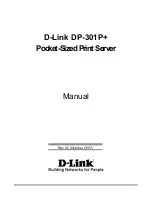
Using the integrated management module
This topic provides an overview of the integrated management module II (IMM2) system management
features.
The integrated management module II (IMM2) is a second generation of the functions that were formerly
provided by the baseboard management controller hardware. It combines service processor functions, video
controller, and remote presence function in a single chip.
For more information about IMM2, see the
Integrated Management Module II User's Guide
at https://
systemx.lenovofiles.com/help/topic/com.lenovo.sysx.imm2.doc/printable_doc.html.
The IMM supports the following basic systems-management features:
• Active Energy Manager.
• Alerts (in-band and out-of-band alerting, PET traps - IPMI style, SNMP, email).
• Auto Boot Failure Recovery (ABR).
• Automatic microprocessor disable on failure and restart in a multi-microprocessor configuration when one
microprocessor signals an internal error. When one of the microprocessors fail, the server will disable the
failing microprocessor and restart with the other microprocessors.
Note:
When one microprocessor fails in a four-microprocessor configuration, two microprocessors will
be disabled.
• Automatic Server Restart (ASR) when POST is not complete or the operating system hangs and the
operating system watchdog timer times out. The IMM might be configured to watch for the operating
system watchdog timer and reboot the system after a timeout, if the ASR feature is enabled. Otherwise,
the IMM allows the administrator to generate a nonmaskable interrupt (NMI) by pressing an NMI button on
the rear of the server for an operating-system memory dump. ASR is supported by IPMI.
• Remote presence support (remote video, remote keyboard/mouse, and remote storage).
• Boot sequence manipulation.
• Command-line interface.
• Configuration save and restore.
• DIMM error assistance. The Unified Extensible Firmware Interface (UEFI) disables a failing DIMM that is
detected during POST, and the IMM lights the associated system error LED and the failing DIMM error
LED.
• Environmental monitor with fan speed, temperature, voltages, fan failure, power supply failure, and power
backplane failure.
• First Failure Data Capture (FFDC) support.
• Intelligent Platform Management Interface (IPMI) Specification V2.0 and Intelligent Platform Management
Bus (IPMB) support.
• Invalid system configuration (CONFIG) LED support.
• Light path diagnostics LEDs indicators to report errors that occur with fans, power supplies,
microprocessor, hard disk drives, and system errors.
• Local firmware code flash update
• Nonmaskable interrupt (NMI) detection, generation, and reporting.
• Operating-system failure blue screen capture.
• PCI configuration data.
• PECI 3 support.
Configuration information and instructions
133
Summary of Contents for 6241
Page 1: ...System x3850 X6 and x3950 X6 Installation and Service Guide Machine Type 6241 ...
Page 6: ...iv System x3850 X6 and x3950 X6 Installation and Service Guide ...
Page 56: ...42 System x3850 X6 and x3950 X6 Installation and Service Guide ...
Page 82: ...68 System x3850 X6 and x3950 X6 Installation and Service Guide ...
Page 132: ...118 System x3850 X6 and x3950 X6 Installation and Service Guide ...
Page 158: ...144 System x3850 X6 and x3950 X6 Installation and Service Guide ...
Page 214: ...200 System x3850 X6 and x3950 X6 Installation and Service Guide ...
Page 358: ...344 System x3850 X6 and x3950 X6 Installation and Service Guide ...
Page 1938: ...1924 System x3850 X6 and x3950 X6 Installation and Service Guide ...
Page 1964: ...1950 System x3850 X6 and x3950 X6 Installation and Service Guide ...
Page 1968: ...1954 System x3850 X6 and x3950 X6 Installation and Service Guide ...
Page 1975: ...Taiwan Class A compliance statement Appendix F Notices 1961 ...
Page 1976: ...Taiwan BSMI RoHS declaration 1962 System x3850 X6 and x3950 X6 Installation and Service Guide ...
Page 1988: ...1974 System x3850 X6 and x3950 X6 Installation and Service Guide ...
Page 1989: ......
Page 1990: ......















































